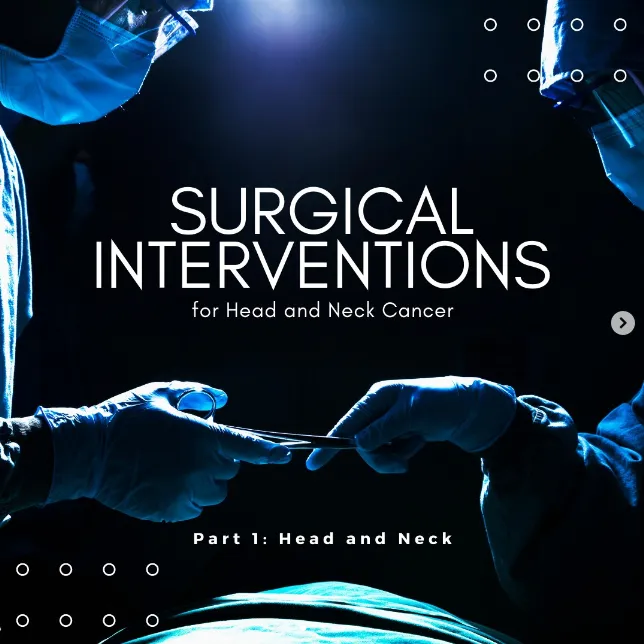Dealing with head and neck cancer can be overwhelming, especially when it comes to understanding the surgical options available. In this article, we’ll break down the different types of surgeries in a simple and easy-to-understand manner. Whether you or a loved one are facing this challenge, having a basic knowledge of these procedures can help you make informed decisions and understand what to expect during the recovery process. So, let’s dive in and explore the various surgical interventions for head and neck cancer.
In a previous post I wrote about how a speech Language Pathologist is involved in head and neck cancer diagnosis. Read it here.
Neck Dissection: Removing Cancerous Tissue and Lymph Nodes
When it comes to head and neck cancer, a common surgical procedure is a neck dissection. This involves removing cancerous tissue and nearby lymph nodes from the neck. The specific type of neck dissection required depends on factors like the location of the cancer and the extent of lymph node involvement. Let’s take a look at some of the common types:
- Radical Neck Dissection (RND): This involves removing tissue, lymph nodes from levels I-V, ipsilateral sternocleidomastoid muscle (SCM), internal jugular vein, and spinal accessory nerve.
- Modified RND Types I, II, and III: These variations involve the removal of tissue and lymph nodes from different levels, with varying degrees of muscle and vein involvement.
Other Neck Dissections for Specific Locations:
In some cases, head and neck cancer involves dissections of specific locations, such as the face or oral cavity. Different types of neck dissections may be necessary for these situations:
- Supraomohyoid Neck Dissection (ND): This is performed when the tumor is near the ear or lower eyelid, involving the removal of tissue and lymph nodes from level I-II.
- Selective ND: When the cancer affects the lateral tongue, oral cavity, or anterior floor of the mouth, this procedure removes tissue and lymph nodes in levels Ib-IV.
- Lateral ND: Indicated for carcinoma of the larynx, hypopharynx, differentiated thyroid carcinoma, melanoma, or primary parotid malignancies, removing tissue and lymph nodes from levels II-IV.
Laryngectomy: Restoring Life after Surgery
Laryngectomy is a significant surgical procedure for head and neck cancer, involving the partial or total removal of the larynx. Let’s understand the different types:
- Partial Laryngectomy: This surgery removes a portion of the larynx, such as one vocal cord or half of the larynx.
- Supraglottic Laryngectomy: Involves removing structures above the glottis, which is the vocal cord area.
- Total Laryngectomy: When the cancer requires complete removal of the larynx and upper trachea, this surgery is performed. It may also involve lymph node removal, neck dissection, and removal of the thyroid gland.
Glossectomies: Addressing Tongue Lesions
When cancerous lesions affect the tongue, glossectomies are performed. Let’s take a closer look at the different types:
- Type I Glossectomy (Mucosectomy): Removal of the top layers of the tongue, including the mucosa and submucosa.
- Type II, IIIa, IIIb, IVa, IVb Glossectomies: These surgeries involve progressively deeper removal of the tongue, sometimes including specific muscles on one side or both sides, based on the extent of the lesion.
- Type V Glossectomy: The total removal of the mobile tongue and the base of the tongue up to the level of the valleculae.
In Conclusion
Understanding the surgical options for head and neck cancer is essential for patients and their families. By breaking down complex procedures into simple explanations, we hope to provide clarity and empower you to make informed decisions. Remember, each surgery has its unique purpose and considerations based on the location and extent of the cancer. Consult with your healthcare provider to determine the most suitable approach for your situation and to learn more about the expected outcomes, including speech and swallowing rehabilitation. As speech-language pathologists, our understanding of these surgeries enables us to support patients on their journey towards regaining communication and swallowing abilities.

